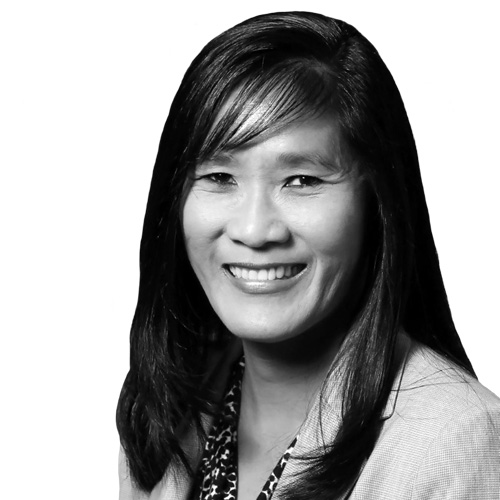When speaking of technological breakthroughs of the twenty-first century, Yulun Wang can name a few without hesitation. And he should be able to. He created them, after all.
Trained as an engineer, Wang initially used his expertise to design surgical robots—a melding of robotics and telecommunication that allowed doctors to work from remote locations. Before the new century was even two years old, Wang’s work bore the first telesurgery in the form of the Lindbergh Procedure. But the deeper he became involved with healthcare, the more aware he grew of one of the industry’s biggest overall problems: an increasingly aging, geographically widespread population that needed more specialized care than was readily available.

“In 1970, there were about twenty different specialties. Today, there are 150,” Wang explains. “So you really need to get the right specialist to the right patient at the right time to get the most high-quality care. And with 30 percent of the population in rural areas, you want to be able to do that everywhere.
“The question becomes,” he suggests, “How do you do all this but lower the overall cost?”
The solution, in part, can be found via Wang’s company, InTouch Health. A pioneer in telehealth services, InTouch has compiled a highly comprehensive cloud infrastructure of nearly 1,400 hospital locations—both across the United States and in thirty other countries—enabling physicians to work remotely, doing as much as possible in the patient environment.
What is possible with telehealth was, initially, a little hard to explain. “We’d make our pitch [to hospitals] and they would say, ‘That sounds pretty cool, but how do I use it?’” Wang recalls. “And it did take us a while to really figure out how you deploy these things and make the entire workflow work.”
What ultimately put InTouch on the medical map was its ability to assist with stroke-patient care. Strokes are among the top leading causes of death and long-term disability, yet only a minuscule percentage of stroke patients receive proper treatment. This is partly due to a lack of awareness—in the first hour, many don’t even realize they are having a stroke—but a general lack of stroke neurologists, combined with the inability to get to one in time to make a difference, has been a problem as well. By bringing neurologists to patients remotely, InTouch is now able to be involved with as many as 80,000 strokes a year.
“[The telehealth movement] is a little bit like what the Internet did for banking … Changing when you had to go into your bank to do anything, to doing everything online—our infrastructure is similar to that.”
Wang sees InTouch’s cloud infrastructure as a sort of delivery system where both patient-data and physician workflow documentation is delivered across numerous organizational boundaries and distances. “It’s a little bit like what the Internet did for banking,” he says of the telehealth movement. “Changing when you had to go into your bank to do anything, to doing everything online—our infrastructure is similar to that.
Multiple Specialties
By way of patient wards, clinics, ERs, ICUs, nursing homes, birthing centers, and other facilities with medical needs, InTouch now works in other specialties as well:
• Pediatrics
• Neonatology
• Cardiology
• Critical care (particularly in cases of attempted suicide)
• Trauma/EMS
• Orthopedics
• Oncology
• Behavioral health
• Occupational health
• Infectious disease
“If you have a stroke in California, and are being seen by a doctor in New York City, that doctor can assess all the clinical information on that patient in order to render a diagnosis … but then also document and submit for follow-up treatment after that patient goes off-line.”The follow-up on discharged patients has, in fact, taken on new importance thanks to the Affordable Care Act. Hospitals are now penalized if patients have to return within thirty days of their release—“which is making hospitals think about how they’re going to take care of patients after they’ve been discharged,” Wang says. But with the help of software such as ViewPoint—available through InTouch—the challenges of aftercare are reduced considerably. “ViewPoint allows hospital clinicians to continue taking care of that patient—even after they’ve left the hospital.”
Adapting healthcare providers to the ways of telemedicine comes with its own challenges; the technology behind companies such as InTouch can be relatively simple to master, but the innovation as a whole can require providers to rethink the ways in which they deliver care. Furthermore, there are regulatory barriers—doctor compensation and state-by-state licensing, for instance—all of which tend to change the very culture of a medical facility.
Still, the benefits of telehealth are impossible to ignore. With over 600,000 patient/physician encounters on record for InTouch, Wang estimates at least one in ten of those encounters to be life-saving. And thanks to his company’s cloud-infrastructure technology, he sees it someday doing more than even the largest healthcare system. “We’re able to capture data at a much faster rate than anyone else … and capture it conveniently via the normal course of treatment,” he says. “That allows us to run analytics on that data, to pull out salient points of improvement, so we can be constantly improving the state of medicine more conveniently and factually than ever before.”
For Wang, the “remote” possibilities for patient/physician relationships through InTouch are a constant source of fascination. “I know a physician who lived in Georgia, met a guy from Paris, married him and moved to Paris … and she is still practicing medicine in Georgia!” he says, incredulously. “These models are really evolving to be quite different than anybody expected. It’s been an exciting ride.”

